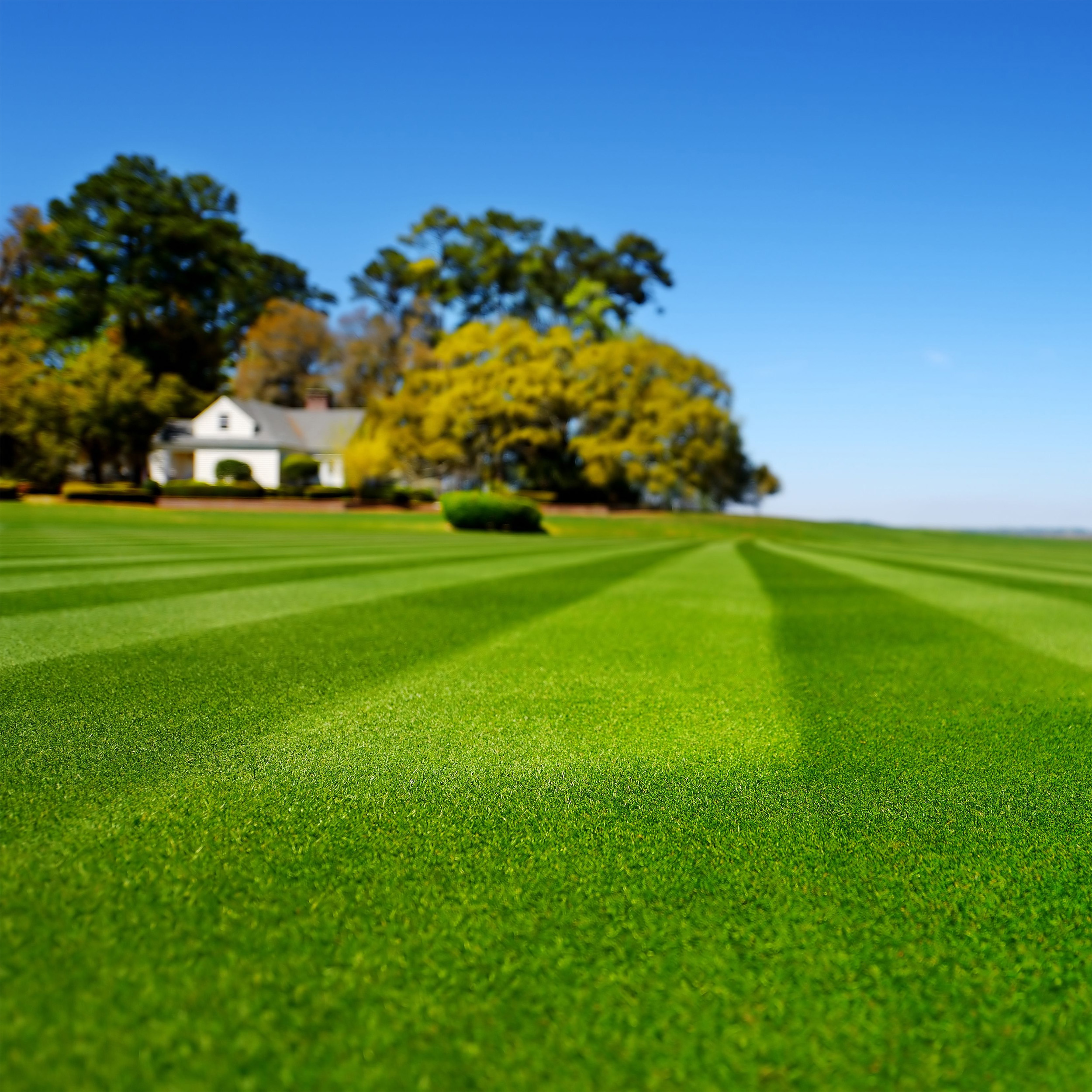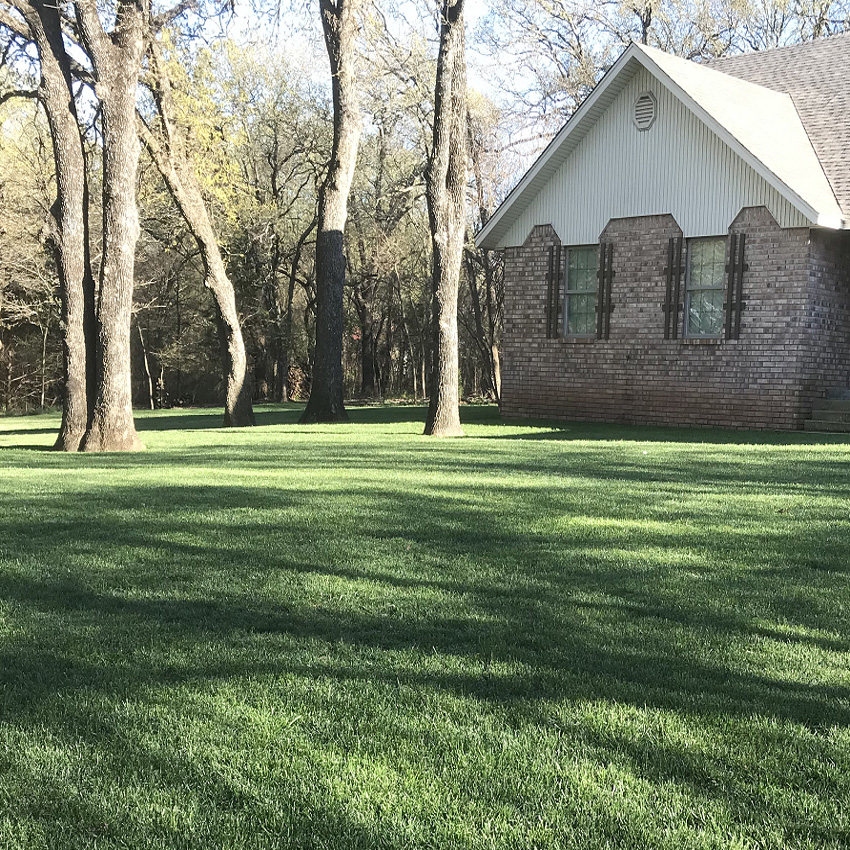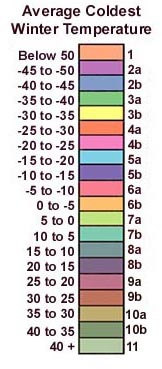
Blackjack Bermudagrass
- Cost Effective
- Warm Season
- Deep green color

Grasses used in Texas for lawns are dependent on largely where in this large state they will be planted. Growing season ranges from 185 days in Northern cooler areas to over 300 days in the Southeast. Rainfall is also a factor in lawns with a wide range from over 50+ inches in the East to less than 10 in the western areas. Due to these factors, cool season and warm season grasses are used.
Cool-season grasses:
Tall Fescue (Festuca arundinacea). Tall fescue will tolerate a wide range of soil conditions, but like most turfgrasses grows best with a soil pH between 5.5 and 6.5. Turf-type tall fescues are used extensively in the Dallas/Fort Worth area and Northern Texas, but generally will require irrigation to survive heat/drought. Fescue can be used in any part of the state in shady areas.
Perennial ryegrass (Lolium perenne). Ryegrass is suited for overseeding warm season grasses throughout Texas. They can be used as a temporary winter cover on new lawns that have not been permanently established. Ryegrasses are also used for overseeding, that is, to provide a green cover on a warm-season grass during the winter.
Kentucky bluegrass - Kentucky bluegrass is a persistent and attractive species that is used in many home lawns, institutional grounds, parks, and athletic fields. This species has a medium to fine leaf texture and a medium- to dark-green color when properly fertilized. It produces extensive underground stems, called rhizomes, which provide good sod-forming characteristics and superior recuperative potential when compared to most other cool-season turfgrasses. Kentucky bluegrass is cold tolerant, wear tolerant, and moderately heat and drought tolerant. It makes optimum growth during the spring and fall and becomes semi-dormant under prolonged periods of heat and drought. It usually recovers quickly from dormancy with the advent of cooler temperatures and adequate soil moisture. Kentucky bluegrass is limited in use to mainly panhandle areas of Texas.
Warm-season grasses:
Bermudagrasses (Cynodon Spp). All bermudas thrive in hot weather but perform poorly in shade. Bermudas spread so rapidly by both above-and-below-ground runners that they are difficult to control around flower beds, walks and borders. If fertilized adequately, they require frequent mowing. The bermudagrasses are adapted to the entire state and tolerate a wide soil pH.
Centipedegrass (Eremochloa ophiuroides). This is a low, medium textured, slow growing but aggressive grass that can produce a dense, attractive, weed-free turf. It is more shade tolerant than bermudagrass but less shade tolerant than St. Augustine and zoysiagrass. Since centipede produces only surface runners, it is easily controlled around borders of flower beds and walks. It is well adapted as far north as Atlanta and Athens.
Centipede is the ideal grass for the homeowner who wants a fairly attractive lawn that needs little care. Centipede does not require much fertilizer or mowing, and compared to other lawn grasses, is generally resistant to most insects and diseases. It will, however, respond to good management and provide a very attractive turf. Centipede can be established from either seeds or sprigs. Since it is slow growing, it takes longer than bermuda and St. Augustine to completely cover. Centipede is used in North Texas and Panhandle areas.
Centipede is subject to "decline" problems that can be prevented by proper management. This includes care not to overfertilize, prevention of thatch accumulation, irrigation during drought stress, particularly in the fall, and maintaining a mowing height of 1-1 1/2 inches. Centipede is well adapted to soils of low fertility with a pH of 5.0 to 6.0 but grows best, like most grasses, at a soil pH of 6.0 to 6.5.
Buffalograss - These warm season stoloniferous grasses, due to their drought resistance, are becoming popular in the dryer areas where rainfall is limited to less than 20 inches annually. Buffalograsses are resistant to heat and drought. They are well adapted to a wide range of soils, but especially to alkaline conditions and soils of low fertility. Buffalograsses are slow to establish and they require infrequent mowing.
| Click Name To View Grass Seed Choice | Type | Applications | |
|---|---|---|---|
| Bermuda Grass - Oasis |
|
Warm Season | Lawns - Full Sun - Fast Growing |
| Bermuda Grass - Blackjack |
|
Warm Season | Lawns - Full Sun - Fast Growing |
| Bermuda Grass - Yukon |
|
Warm Season |
Lawns - Golf Course - Fast Growing Full Sun - High End - Best Cold Tolerance |
| Bermuda Grass - Arden 15 |
|
Warm Season |
Lawns - Golf Course - Fast Growing Full Sun - High End |
| Buffalo Grass - Buffalo Supreme |
|
Warm Season | Lawns - High Drought Tolerance - Full Sun |
| Centipede Grass |
|
Warm Season | Lawns - Mostly Sunny to Full Sun - Low Maintenance |
| Seashore Paspalum - Seaspray |
|
Warm Season | Lawns - Mostly Sunny to Full Sun - Best Salt Tolerance |
| Fescue/Hybrid Bluegrass Mix - Combat Extreme South |
|
Cool Season |
Lawns - Wear Tolerant - Extra Heat Tolerance Shade Only in USDA Zones 9 - 10 |
| Fescue Blend - Combat Extreme Transition |
|
Cool Season |
Lawns - Wear Tolerant - Shade Only in USDA Zones 9 - 10 |
| OSP Ryegrass |
|
Cool Season | Lawns - Golf Courses - Southern Winter Overseed |


Below is the USDA Zone Map for Texas so you can determine which zone you reside in. Below that are our picks for your state which will do best in your area. Next on this page are tables which list various grasses and their characteristics so you can compare before you decide on your purchase. Click on the product name (ie. La Prima) for more information about that grass and to make your purchase.
| USDA Zone Map For Texas | |
|---|---|
 |
 |
| Compare Various Grasses For Their Characteristics | ||||||||
|---|---|---|---|---|---|---|---|---|
| Cool Season Grasses |
Leaf Texture |
Establish Rate |
Nitrogen Use |
Water Use |
Drought Tolerance |
Salinity Tolerance |
Shade Tolerance |
|
| Fescue - Hard | Fine | Slow to Moderate |
Low to Very Low |
Moderate | Excellent | Low to Moderate |
Excellent | |
| Fescue - Creeping | Fine | Moderate | Low to Moderate |
Moderate | Good | Low | Excellent | |
| Fescue - Turf Type | Moderate to Coarse |
Moderate | Moderate to High |
Low to Moderate |
Excellent | Low | Good to Excellent |
|
| Ryegrass - Perennial | Fine to Moderate |
Very Fast | Moderate to High |
Moderate to High |
Good | Poor to Moderate |
Poor to Moderate |
|
| Warm Season Grasses |
Leaf Texture |
Establish Rate |
Nitrogen Use |
Water Use |
Drought Tolerance |
Salinity Tolerance |
Shade Tolerance |
|
| Bermudagrass | Fine to Moderate |
Moderate to Fast |
Moderate | Moderate to High |
Excellent | Very Good | Poor | |
| Centipedegrass | Moderate to Coarse |
Slow | Low | Low | Good | Moderate | Moderate to Good |
|
| Seashore Paspalum | Moderate | Moderate | Moderate | Moderate | Excellent | Excellent | Good | |
| Compare Various Grasses For Their Characteristics - Continued | ||||||||
|---|---|---|---|---|---|---|---|---|
| Cool Season Grasses |
Fertility Needs |
Wear Resistance |
Mowing Height |
Cold Tolerance |
Acid Soil Tolerance |
Thatching Tendency |
Heat Tolerance |
|
| Fescue - Hard | Low | Low | Medium | Medium to High |
Medium to High |
Low to Medium |
Low to Medium |
|
| Fescue - Creeping | Low | Low | Medium | High | Medium to High |
Low to Medium |
Low to Medium |
|
| Fescue - Turf Type | Low to Medium |
Medium to High |
Medium to High |
Medium | High | Low | High | |
| Ryegrass - Perennial | Medium | High | Low to Medium |
Medium | Medium | Low | Medium to High |
|
| Warm Season Grasses |
Fertility Needs |
Wear Resistance |
Mowing Height |
Cold Tolerance |
Acid Soil Tolerance |
Thatching Tendency |
Heat Tolerance |
|
| Bermudagrass | Medium | High | Low to Medium |
Low to Medium |
Medium | Medium | High | |
| Blue Grama | Low | Low | High | High | Low | Low | High | |
| Buffalograss | Low | Low | High | High | Low | Low | High | |
| Centipedegrass | Low | Low | Medium to High |
Medium to High |
High | Medium | High | |
| Seashore Paspalum | Medium to High |
Medium to High |
Low | Medium | Low | Medium to High |
High | |